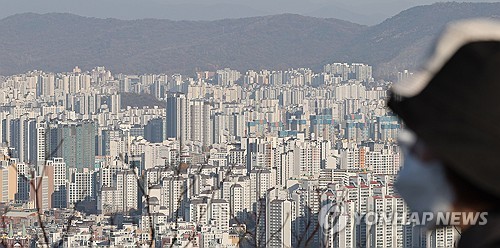
(Seoul=Yonhap Infomax) Hyun Jung Lee, Dong Kyu Heo – South Korea’s financial authorities have begun reviewing an increase in the stress interest rate applied to the third phase of the Debt Service Ratio (DSR) for regional mortgage loans, set to take effect in January next year.
With the regional real estate market still sluggish and the issue of unsold housing units unresolved, there is growing speculation that the temporary easing of regulations may be extended.
According to financial authorities on the 25th, the Financial Services Commission (FSC) is conducting simulations on the range of stress interest rates applied to mortgage loans outside the Seoul metropolitan area and other regulated regions.
The stress DSR is a system that adds a certain level of additional interest rate (stress rate) when calculating the DSR, reflecting the potential decline in borrowers’ repayment capacity during future interest rate hikes. The FSC introduced this as a tool to control the expansion of loan limits during periods of falling interest rates.
Since July 1, the third phase of the stress DSR has been implemented, with a uniform 1.5% stress rate applied to all household loans at banks and secondary financial institutions.
However, considering the regional real estate market, the FSC decided to temporarily maintain the previous phase-two stress rate of 0.75% for non-metropolitan, non-regulated areas until the end of December this year.
Following the government’s October 15 measures, the minimum stress rate for mortgage loans in the Seoul metropolitan area and other regulated regions was raised to 3.0%, widening the gap in stress rates between metropolitan and regional areas to 2.25 percentage points.
With the year-end expiration of the temporary easing for regional stress rates approaching, authorities must now decide whether to normalize the rate or extend the grace period.
The FSC plans to reach a conclusion by mid-next month at the latest, based on the results of its simulations.
The commission stated it will comprehensively consider the impact of regional economic conditions and regional mortgage loans on the growth of household debt when determining the appropriate stress rate level.
Authorities are closely monitoring whether the widening gap in stress rates between regulated and non-regulated regions is creating unintended benefits. If a “balloon effect” is observed—such as increased demand for housing subscriptions in major regional cities—normalizing the regional mortgage stress rate may be considered.
However, the generally weak construction market in regional areas remains a key obstacle to raising the stress rate. The large volume of unsold homes and the ongoing polarization between the Seoul metropolitan area and the regions require further consideration.
“With the stress DSR regulation temporarily eased in regional areas until year-end, there is a perception that this could be the last chance to buy a home at relatively affordable prices,” said a financial industry official. “However, since the impact on overall household debt management is limited, there is a possibility that the grace period could be extended by another six months.”
hjlee@yna.co.kr
(End)
Copyright © Yonhap Infomax Unauthorized reproduction and redistribution prohibited.

